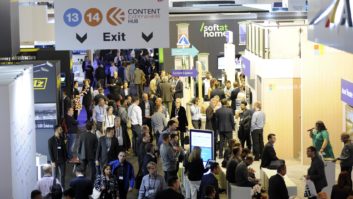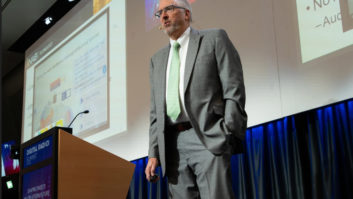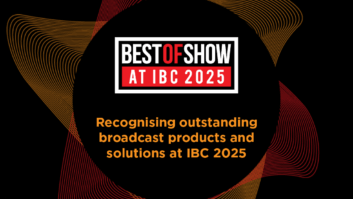The National Association of Broadcasters and most radio stakeholders realize the future of radio will depend heavily on the connected car.

Every automobile manufacturer now offers an internet-connected, feature-rich infotainment system that is replacing the venerable AM/FM/satellite standalone radio in almost all new models. The integration of this multi-layered platform offers the consumer a dizzying array of new choices and options in the digital dashboard.
Since radio started becoming visual with the introduction of RDS and then HD Radio over the past two decades, traditional AM/FM stations have been able to add important “eye candy” to radio displays. Radio’s primary competitors, like XM/Sirius and Pandora, have been doing this from their beginnings. How well terrestrial stations harness and display this new content will have a significant impact on their ability to compete with all the new services available in the connected car.
Last year, NAB released a comprehensive 23-page study of “Digital Dashboard Best Practices” for the industry that identified significant areas on which radio stations should focus to optimize and maintain their dashboard presence. It included an audit of how several markets were performing that exposed significant room for improvement.
A follow-up summary that managers and engineers can use to audit and tweak their own stations can be found at http://nab.org/innovation/digitalDashboard.asp. Then in December 2017, an interactive webinar was added; it remains available online.
METADATA MANAGEMENT
As part of the NAB’s ongoing focus on traditional radio’s evolving place in the connected car, the Broadcast Engineering and Information Technology Conference at the spring NAB Show offered a timely discussion on this topic.
Moderated by NAB Vice President of Advanced Engineering David Layer, the panel featured Glynn Walden, consultant and former design engineer with USADR and iBiquity; Stu Buck, founder of Arctic Palm; Mike Englebrecht, director of broadcast engagement for TagStation and NextRadio; Mike Raide, senior manager of broadcast technologies for Xperi Corp.; and David Julian Gray, senior product manager of content production for NPR.
Buck opened the discussion by identifying various visual features stations can add to their dashboard presence. Even stations only implementing RDS without HD Radio can and should display station slogans and promos, music titles and artists, program titles and hosts, weather and traffic reports and other messaging, including real-time content, he said. HD Radio and its Artist Experience feature can add pictures and album artwork along with traffic flow and weather maps, all in color to the screens of HD Radios and smart devices.
Buck described the component pieces of the metadata flow needed to convey this data. Much of the data is captured automatically from the station’s automation system and conveyed either via an IP connection over the LAN or via serial port. Other data is captured directly from satellite or internet-based services. A third-party “middleware” capture and parsing software app typically is employed as an interface the user can program and maintain to control the data sources and how the data is displayed.
Arctic Palm is among the middleware metadata management apps available to stations. Acquired by HD Radio owner DTS in 2016, Arctic Palm offers a suite of five programs tailored to control and optimize specific station activities and their data management functions: CS Content Management, CS Copy Management, CS Call Management, CS Interactive and CS Center Stage Live. Center Stage Live incorporates several of these modules as a “Swiss Army knife” of metadata management.
One of the issues stations face regarding metadata is the need to filter out data not intended for public viewing. Voice track IDs, ad and song file numbers, log comments and specific automation control characters are examples that the Center Stage Live module can block from appearing in RDS and HD text scrolls.
The middleware app posts the programmed metadata to various transmission and display destinations. Those include the RDS generator, HD Radio and Importer ingest portals (JMSAC module), station websites and associated streaming services, Tag Station and NextRadio services, other web-based services like TunedIn and iHeartRadio and even real-time digital billboards.
TAGSTATION AND NEXTRADIO’S ROLE
Mike Englebrecht outlined the role TagStation and NextRadio are playing to provide free live radio on smartphones and additional subscriber-based metadata services to radio broadcasters.
Parent company Emmis Communications is heavily invested in helping radio create the best audience experience possible to maintain radio’s prominence in the car, he said. It introduced TagStation as an app following the middleware software to further enhance metadata services for radio.
TagStation is a web-based metadata management system providing not only text data for RDS but also station logos, album artwork plus advertising and event-based visual enhancements for station websites, online streaming, as well as for HD Radio and smart device displays.
NextRadio is a free downloadable app that enables listening to FM radio stations or their online streams complete with visual enhancements on smart devices. LiveGuide makes navigation easy on iPhones and Android phones. Emmis has been proactive in pushing cell carriers to unlock the onboard FM chip in smart devices. NextRadio is now equipped with Dial Report, an audience measurement reporting service that feeds back listener usage and advertiser response data to subscribers.
HD RADIO
Mike Raide, a senior engineer with iBiquity and DTS (now owned by Xperi), discussed how visual radio is delivering more engaging and effective impact for both listeners and advertisers.
HD Radio can send not only album art plus station and advertiser logos, but also nearly real-time images of Doppler weather and traffic congestion areas on full color maps.
Advertisers can be hyper-local by targeting ad messages to selected demos and regions of the station’s coverage area, he said. With a visual display to enhance an advertiser’s message, recall of that message increases by significant percentages, especially with millennials. Enhanced ads with graphics are supported by the popular middleware data management providers like Arctic Palm, Jump2Go and The Radio Experience.
NPR’S APIS
National Public Radio has been actively engaged in content delivery enhancements for the digital dash via two new application programming interfaces, or APIs, that it provides to its affiliated network stations.
David Julian Gray, NPR’s senior product manager for content production, described the goals of NPR’s content delivery APIs as “discoverable, available and sustainable.” The MetaPub API integrates with middleware apps and TagStation to “clean up” the data parsing for better and more consistent displays.
The other new API is a link to Amazon’s Alexa smart speaker. Digital virtual assistants like Alexa, Cortana, Siri and others, will undoubtedly find their way into the connected car. Gray said half of the NPR audience in cars is using smart devices instead of the dashboard radio, and 25 percent of millennials choose to use the NPR webstream in lieu of radio.
NPR One, introduced in 2015, is a platform designed to enable content created by local NPR stations to become easily available to other member stations and national audiences. More than just podcasts or a stream on a station’s website, it’s been dubbed “the app that wants to be the Netflix of listening.” NPR One is still evolving and open for further smart app development, Gray said.
All the panel participants agreed that radio is in a race to remain prominent and help build the connected car of the future. Putting your best face forward on the digital dash is a vital part of that effort.



